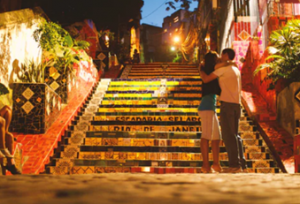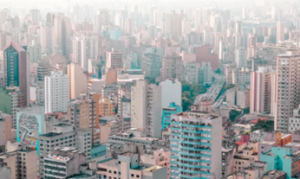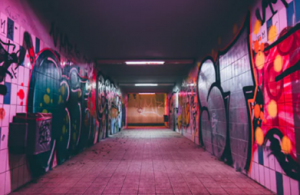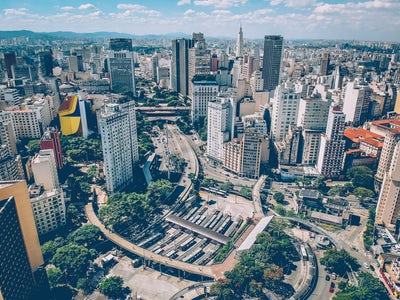Culture, speaking from a philosophical perspective, is extremely important. This is considering that, after all, culture is the lens through which we see the world. As a westerner, you can find that there are numerous other new cultures in Sao Paulo. This will invariably come to you not really as a shock but as a revelation of something different. This article will help you find out something about new cultures in Sao Paulo before you choose to reach out to international moving Brazil experts to help get you there.

Sao Paulo is a mix of different cultures
And this is predominantly thanks to its history. Sao Paulo is a congregation of varying cultures and ethnicities, such as:
- Indigenous American;
- Portuguese;
- African;
- Countless variations thereof.
For that reason, you have countless names ascribed to each ethnic group. For example, Pardos combine European, Native and African ancestry. While most white Brazilians (Brancos) have around 70% European ancestry, Pardos, which are brown-skinned, have about 37-40%. Those two are the vast majority of the population of Sao Paulo. As you well know, Sao Paulo is also a massive tourist center and an attraction both for foreign tourists and for foreign capital.

You will find many Western companies in Sao Paulo. They have moved in the recent years (2010-onwards) to find greener pastures, which they did in Brazil. For that reason, Sao Paulo is a cocktail of cultures, even more so than any other city in Brazil, save, perhaps, Rio de Janeiro.
New cultures in Sao Paulo are incredibly diverse
All this movement of companies and people has left its imprint on Sao Paolo’s culture. You would think that this many varying cultures would be hard to synthesize and that there would be divided among cultural lines in Sao Paulo. And you would be dead wrong. As crazy as it seems, what brings these groups together is their love for culture and the arts. Sao Paulo has an astounding number of cultural institutions, for example;
- 110 museums;
- 160 theatre;
- 300 movie theatres;
- 93 parks and other green areas.
You read that right. Granted, they’re not as big or luxurious as the Broadway Theatre, but if anything shows cultural appreciation, this does it.
Sao Paulo College of Law has a long cultural history
And, it’s a staple of Sao Paulo’s culture. You see, the College has existed since 1827, and, throughout the years, it has produced a large number of influential people. This does not just refer to judges, prosecutors, and politicians, but also poets of national renown.
The College of Law is a central institution because a lot of city’s future policies will depend on the generations of students. It’s a historical monument in and by itself. What’s even more interesting about it is that most of the local artists have finished it – making it crucial for new cultures in Sao Paulo.
Modernism is one of the new cultures of Sao Paulo
Modernism hails from the late 19th century. It’s only “new” in comparison to other forms of art, such as Classicism, Baroque and Renaissance. However, it came to Brazil (the bigger cities, at least) in the early 1920’s and what sets Brazil apart from other Modernist movements across Europe, is its unique cultural context. For example, French Modernists (such as Matisse) rejected reality in its entirety and Picasso went all the way into the subconscious.

Brazilian modernists explored these phenomena in architecture – this is, for example, the case with the National Museum of Brazil. In Rio de Janeiro, you can easily find lots of modernist architecture in odd places. For example, in favelas. They are considered to be low-end neighborhoods, but you could easily find a modernist building placed right in the middle of a favela. It’s a strange, but oddly beautiful sight.
The arts are divided among continental lines
There are two main museums in Sao Paulo:
- The Sao Paulo Museum of Art (MASP);
- The Afro-Brazil Museum.
The first one houses most of the European art in Latin America – in other words, you can find all the Romanticism paintings in there – we’re talking about 19th-century painting with emphasis on bright colors. The second one houses over 4000 works of Afro-Brazil art, mostly paintings, but you can also find an occasional sculpture in there. None of it is the modern culture in the true sense of the word, however, it is relatively new to Sao Paulo. New cultures in Sao Paulo broaden the definition of “new”, but many Westerners have never come into contact with them before.
A brief overview of Sao Paulo’s Modern Art Week
The Modern Art Week (MAW) has been running every year, from February 10th to February 17th, since 1922. Even before that, Brazilians have had modern artists; however, this is the first and longest-standing dedicated effort to bring modernism into the Brazilian cultural dialogue. However, just like philosophers, artists don’t agree on everything – in fact, you would be hard-pressed to find two artists in agreement on which contrasting colors are the best for scenery paintings. Such is also the dialogue in new cultures in Sao Paulo – especially when it comes to painting. The groups split, however, the MAW remained in place up to this day.
One of the MAW’s main themes, especially in later years, was plastic. It might sound contradictory to use plastic as a material for art, but think again – it’s cheaper than wood, stone, and metal, meaning more people (artists included) can afford it. It’s also much more easy to work on plastic, to create reliefs and statues, than it would be, say, on granite. It’s understandable now why it exploded in popularity during the 70s as a form of art, right?
Conclusive remarks
Sao Paulo is the center of cultural life in Brazil, and it is no mere happenstance. You will find that out quickly enough after moving to Sao Paulo. The reason for this is not only state-sponsored cultivation, but also determined and driven individuals that want to send a message. New cultures in Sao Paulo are emerging on an almost-daily basis, and it is up to you to find out what suits you best. As far as international moving Brazil goes, it’s one of the best places to get to know all the aspects of Brazilian culture!




 mon ~ fri - 9am ~ 7pm
mon ~ fri - 9am ~ 7pm
